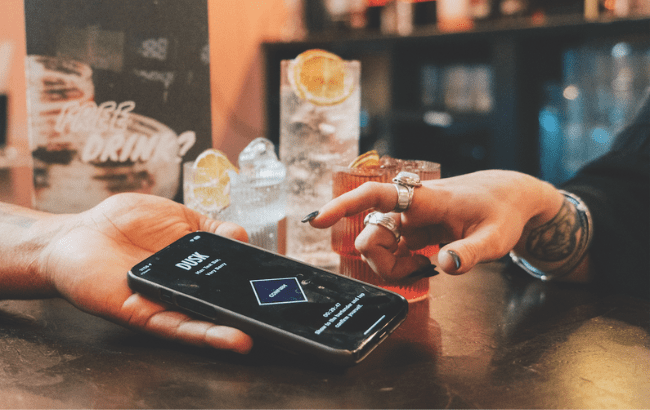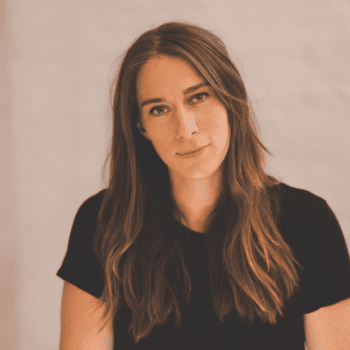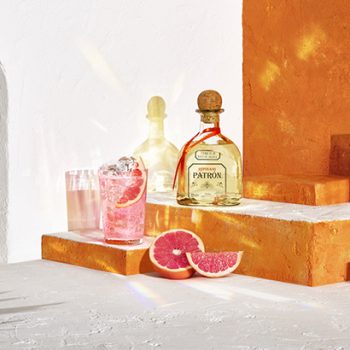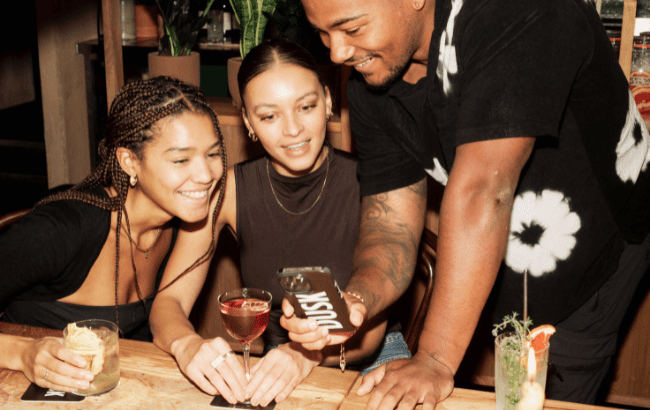This website uses cookies so that we can provide you with the best user experience possible. Cookie information is stored in your browser and performs functions such as recognising you when you return to our website and helping our team to understand which sections of the website you find most interesting and useful.
Catching Zs: how drinks brands can tap into the Gen Z market
By Georgie CollinsThanks to a groundbreaking app experience, drinks brands are targeting the hard-to-reach Gen Z market, offering free drinks in return for harvesting vital data about them.

*This feature was first published in the March issue of The Spirits Business magazine.
For alcohol brands, Gen Z – people born in the mid to late 1990s up until the middle of the 2010s – is often considered the Enigma code of the generations. With changing behaviours and shifting attitudes, combined with a volatile socio‐economic environment, working out how to target this upcoming generation of drinkers is difficult. However, Sophie Abrahamovitch has a source on the inside that is giving brands the intel on how to reach this elusive demographic.
Abrahamovitch is the CEO of Dusk, a UK-based ‘free drink’ app that brings together consumers, drinks brands and on‐trade venues via a three‐way mutually beneficial model: consumers sample free drinks, brands get liquid on lips, and bars host the whole thing (and reap the rewards afterwards).
Formerly known as Drinki, Abrahamovitch launched Dusk on the App Store in 2018. At the time, it was a popular London‐centric application offering free drinks in return for social media advertising, but Abrahamovitch admits it wasn’t being used to its full potential in the way it is now.
“We kind of knew there was something there, but we weren’t quite sure what it was,” she explains. “Back then it was all based on social media; checking in to venues, and the idea of micro‐influencers. We thought if you show your friends where you’re going, you should get a free drink for advertising. That was basically the point.”

Realising potential
But it wasn’t long before the real potential of the app was realised. Dusk now offers brands the chance to drive people to trial their products in multiple UK venues, which in turn generates awareness, incentivises purchase in the on‐ and off‐trade, and tracks consumer behaviour and feedback in real time. It’s that real‐time data that makes Dusk the key to a brand’s marketing plan.
With 790,000 installs and 65,000 monthly active users, Dusk is able to determine the who, when, and what people are drinking, and – most importantly – the verdict. For brands this information is priceless, especially when it comes to the hard‐to‐reach and often misunderstood demographics.
“When you’re in the app, and after you’ve redeemed your drink, we ask a lot of questions,” Abrahamovitch says. “We gather a lot of data from our users, both quantitative and qualitative, and we’re seeing some really amazing stats.”
While reports suggest Gen Z consumers are more likely to abstain from drinking alcohol (a study by alcohol education charity Drinkaware found those aged between 18 and 24 were least likely to consume alcohol, with 26% of that age group being fully teetotal), Abrahamovitch says the average active Dusk user is 24.
However, in January the app ran a trial of non‐alcoholic cocktails in Adventure Group bars in London and Brighton using Ceder’s non‐alcoholic ‘gin’ alternative, and during the month, Dusk saw a 30% upswing in free‐drink redemptions compared with December. “We found the reason people were choosing our Dry January products was 4% saying they’re teetotal, and all the rest were like, ‘I didn’t fancy drinking tonight’ – that kind of approach – which shows that people are just looking at drinking in a slightly different way.”
Abrahamovitch went on to cite health as being one of the biggest concerns for city-dwelling Gen Z drinkers when it comes to watching their alcohol intake. “That speaks to the premiumisation trend we’re seeing as well,” she said. “They care what’s going into their drink, how much they’re drinking, and what the ingredients are. We’re seeing the rise of better mixers, not‐so‐sugary cocktails, and more thought‐through recipes.”
When it comes to spirits, the Dusk data suggests Tequila is what this generation is reaching for. “We had one of our best campaigns ever with Patrón,” she tells me. “That was quite a simple serve – a Paloma. It’s a pink drink, which everyone loves. It’s a really Instagrammable or TikTok‐able brand.”

However, 75% of those who redeemed their free Patrón Paloma had never heard of the brand. “In the Dusk office we couldn’t believe it, because we as Millennials breathe Patrón as a brand… but, actually, the average Gen Z consumer apparently doesn’t.”
These gaps in Gen Z’s brand awareness are where Dusk demonstrates the power it holds. With liquid‐on‐lips being a key driver to brand advocacy, on‐trade sampling soon becomes obvious for those looking to build their brand in new markets. Furthermore, with the rising trend of premiumisation combined with a cost‐of‐living crisis, never has there been a better time for generating advocacy for premium‐plus brands in this demographic.
Recent findings from IWSR Drinks Market Analysis found consumers of all ages are employing new strategies to make budgets go further, including selective upgrading – opting to spend more on better‐quality products in smaller quantities.
This means Gen Z, which is estimated to boast spending power to the value of US$10.7 billion, is likely to seek out higher‐ quality and trustworthy brands that it enjoys over cheaper, lower‐quality products. However, they won’t take risks with their purchases unless completely sure of their investment, which is where Dusk’s on‐trade sampling comes into play.
As well as brand advocation, Dusk also allows for entire spirits categories to open themselves up to new generations of drinkers. Abrahamovitch confirms that Dusk saw “really interesting results” with a Johnnie Walker campaign last August. The Diageo-owned brand partnered with the app to give away 270,000 Johnnie & Lemonades. “Their remit with us was to introduce Johnnie Walker to a new generation, and try to get away from the stigma that whisky is snobby. We’ve had amazing results. All the feedback is like, ‘I didn’t think I liked whisky, but this is really nice’. So it’s been really interesting.”
Incentivising bar visits
At a time when the UK on‐trade is suffering the effects of train strikes, staffing issues, and a cost‐of‐living‐meets‐energy crisis, Dusk’s model also gives drinkers incentive to visit bars. The Johnnie Walker campaign was projected to drive £4 million (US$3.3m) in revenue for the venues involved via a 12.5% rise in sales of the brand’s Black Label expression, as, according to the app’s data, 75% of users go on to buy a drink after claiming their free serve. This equates to an average spend of £14.02 per head, all of which tends to fall in the middle of the week.

However, Dusk’s data suggests that relying on the app alone to generate footfall can only go so far. If the on‐trade wants to attract returning Gen Z consumers, it needs to focus on authenticity, Abrahamovitch says. “Gen Z are looking for the TikTok approach, something much more authentic. Gimmicks are done, people just want to go out with their mates and be entertained.”
Abrahamovitch also stresses the importance of venues and brands to prioritise relevance alongside authenticity. “There’s a lot that is really easy to get wrong,” she continues. “Diageo have done some cool stuff, working with good influencers and finding good, relevant fits for their brands in terms of the audiences they want to capture. The brands trying to connect in person with Gen Z, with physical events and touch points rather than just going for a digital approach, are the ones getting it right.”

